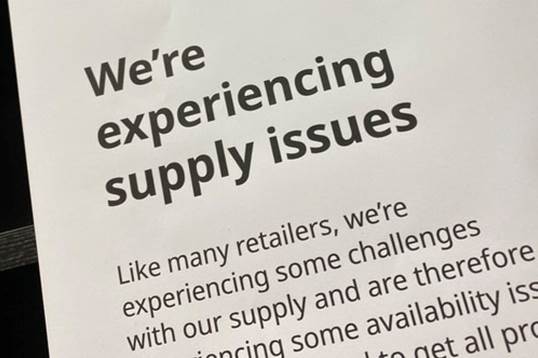Cigdem Ataseven, associate professor in the Department of Operations and Supply Chain Management, helps explain the current problems with the world's supply chains.
What's Happening with Global Supply Chains?
What is the supply chain?
To begin with, Ataseven points out that there is no single supply chain.
“Supply chains are everywhere, and they are basically the connections between suppliers, firms, organizations and customers.”
Essentially, they are an encompassment of all the processes involved in buying and distributing products. Through them, flow the money, information and products involved in these processes, she explained.
“These flows can be forward from supplier to focal firms and then ultimately to end users (consumers), and backward from consumers to the firm as a result of the return process.”
“Multiple parties from all over the glove are involved with the movement of goods and services. Supply chains are complex systems, and they need to be coordinated.”
What is the current problem with the world’s supply chains?
Recently, there have been disruptions in global supply chains, causing them to slow and causing issues with product distribution.
“You may have experienced a trip to the grocery store only to find the item you are looking for is out of stock. For instance, toilet paper became one of these items. This happened because of the increasing demand due to the pandemic and associated uncertainty around it.”
This is happening with other products as well.
“When you think that you may not be able to find what you are looking for next time you are in store, you start buying more of it. Or you may want to reduce the number of trips to the grocery store, so you buy in bulk.”
This sudden increase in consumer activity then leads to difficulties related to production and keeping up with the demands of consumers.
“Customer preferences shifted (e.g., from travel related expenses to home improvement or gym equipment type of purchases) because of the lifestyle changes due to the pandemic. There has been a movement in some supply chains to keep less inventory and operate in lean conditions pre-pandemic to reduce waste. The pandemic starts this debate of whether keeping low inventories may have contributed to the current supply chain problems.”
“While lean manufacturing tries to reduce waste and redundancies, inventory is a necessary evil in supply chains and companies have to carry some safety stock in their systems. However, the pandemic was a shock to the systems that have been operating under normal conditions.”
Because of these unexpected shifts in demand, orders are not able to be fulfilled.
Other factors that have affected the supply chain are trucking shortages and changes in customer preference.
What can we do about it?
Everyone, from businesses to individual consumers are affected by slowness in supply chains. Businesses are expected to carry certain products and not having them leads to a decline in service. On the other hand, customers are affected by inflating prices and lack of product choice, Cigdem explained.
For customers, it is important to keep calm, responsibly track inventory of needed goods and reduce waste. For businesses, it is important to identify bottlenecks in operations and improve demand forecasting, Cigdem suggested.
It is hard to determine when supply chain activities will return to normal.
“Many experts in the field expect the supply chain disruptions to continue well into 2022,” Cigdem said. “The good news is that there is a lot of effort going into the resolution of these issues both from academic and industry.”
Cigdem believes that the world can learn from these current disruptions to develop better risk management in the future.

